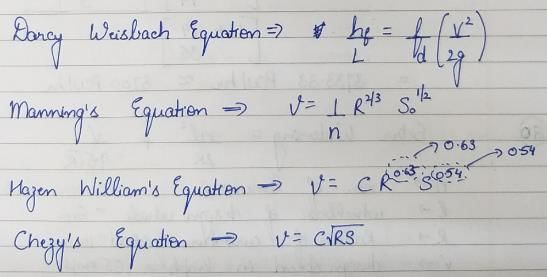Test: Environmental Engineering & RCC- 2 - GATE MCQ
15 Questions MCQ Test - Test: Environmental Engineering & RCC- 2
Which one of the following methods gives the best estimate of population growth of a community with limited land area for future expansion?
The standard turbidity produced by one mg of silicon dioxide (silica) in one litre of distilled water, is called
| 1 Crore+ students have signed up on EduRev. Have you? Download the App |
Water is considered ‘hard’, if its hardness is of the order of
The commonly used indicator for measuring iron concentration in water is
An industry has a sewage tre atment plant which produces sludge with a moisture content of 98% With the solid content remaining the sludge is thickened so that the moisture content now is 96%. It original quantity of sludge is P, what is the quantity of thickened sludge.
Consider the following pairs:
Q.
Which of these pairs are correct?
The threshold odour number (TON) for a water sample of 40 ml, diluted to standard 200 ml mixture, in which odour is just barely detectable to the sense of smell, is
Which one of the following tests of water/ wastewater employs Erichrome Black T as an indicator ?
The maximum permissible limit for fluoridein drinking water is
MPN Index is a measure of which one of the following
A waste water sample diluted to 100 times with aeration water had an initial dissolved oxygen (DO) of 7.0 mg/L and after 5 days of incubation at 20°C, the DO was zero. The BOD of waste water is
Detention time for a sedimentation tank (continuous flow type), is given for a tank, passing a discharge = Q, and having length = L, width = B, and depth = H, as:
Which of the following are the common problems associated with the operation of rapid sand-filter?
1. Air binding
2. Cracking of sand beds
3. Bumping of filter beds
4. Mud balls
Select the correct answer using the codes given below:
Match List-I with List-II and select the correct answer using the codes given below the lists:
List-I
A. High turbidity low alkalinity
B. Low turbidity high alkalinity
C. High turbidity high alkalinity
D. Low turbidity low alkalinity
List-ll
1. Small number ot colloids makes coagulation difficult. Sweep coagulation is more effective
2. Prevents formation of AI(OH)3
3. Reduced pH makes small dosages of coagulant more effective
4. pH is relatively not affected when coagulant is added


















